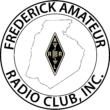The Frederick Amateur Radio Club is sponsoring the FARClub 2M Simplex QSO Challenge on Saturday, February 25th from 7:00 PM until 9:00 PM (but feel free to go later if you choose). You do NOT need to be a club member to participate. The goal is to provide a fun February event without getting cold; an event for both new hams and those who maybe don’t get out like they once did. While I’m a fan of digital, I’d like to keep this an all-voice event, using FM and SSB modes. The spirit of this event is to provide a very local QSO party, but with a couple of twists:
- How Low Can You Go Challenge (can be optional). As you make a contact, each end should reduce power to determine the lowest output required to still communicate. Most radios will only support High/Medium/Low. For example, let’s say that K3MMM makes contact with N3LSB. After initial exchange, K3MMM will say “I’m going low”, and then moves to medium power, then transmit something like “N3SLB, medium power, how copy”. If good copy, K3MMM moves to low power and repeats “N3LSB, low power, how copy”. If good copy, N3LSB would then start the step down in power process. If at any point, contact is lost on lower power, move back to full power and complete the transaction. Yes, this will take an extra minute or two, but it can be interesting to see how much or little power is really required. If using an HT, same thing – your high/med/low will just be lower. Log the lowest power required to effectively communicate. You may want to turn squelch down/off for this event.
- If you’re a new ham, and would like to participate, but maybe aren’t so sure of how these things really work, I’m encouraging experienced hams to open their shacks for this event, inviting new hams to join them. How will this work? If you’re willing to host a new ham, please comment on this post with your call sign and “open shack” or similar words (i.e. K3MMM Open Shack). If your email is current on QRZ.com, we can put folks together. I’m hoping that with the geographical diversity of our group, there will be someone just down the road for any new ham.
Logs can be in any format, including hand-written. If electronic, I’d prefer ADIF format, but can take .csv or most anything else. Logs are due on or before March 11th – you can email to my call sign @arrl.net or mail to my address found on qrz.com. I’m not going to cross-check logs, but rather count on your spirit and integrity.
***(Update) I’ll be awarding the most-distant contact for both SSB and FM. In addition to your log, PLEASE (please!) let me know your longest contact, including far end call sign and approximate distance from your location.
*** (update) Those using SSB should the weak-signal frequency range of: 144.000 to 144.500, with specific “channels” of 144.100, 144.200, 144.300, 144.400 & 144.500.
In keeping with the T-MARC bandplan for our region (found here if you’re interested) and to save you from looking it up, the standard FM simplex frequencies are below. For FM, we’ll use the 146.415 to 146.595 block of channels, as they’re likely the most familiar with most folks. Specifics are:
| Use these frequencies for event | |||
| T-MARC simplex range | 145.500 – 145.760 | 146.415 – 146.595 | 147.405 – 147.585 |
| T-MARC spacing in MHz | 0.02 | 0.015 | 0.015 |
| Simplex frequencies | 145.500 | 146.415 | 147.405 |
| 145.520 | 146.430 | 147.420 | |
| 145.540 | 146.445 | 147.435 | |
| 145.560 | 146.460 | 147.450 | |
| 145.580 | 146.475 | 147.465 | |
| 145.600 | 146.490 | 147.480 | |
| 145.620 | 146.505 | 147.495 | |
| 145.640 | 146.520 | 147.510 | |
| 145.660 | 146.535 | 147.525 | |
| 145.680 | 146.550 | 147.540 | |
| 145.700 | 146.565 | 147.555 | |
| 145.720 | 146.580 | 147.570 | |
| 145.740 | 146.595 | 147.585 | |
| 145.760 |
Download a copy of the above chart in .pdf form here: T-Marc simplex 2m frequencies
As always, let me know if there are questions. My email is current on qrz.com, or you can comment to this note.
73
Mike K3MMM

K3MMM welcomes new hams to my shack for this event